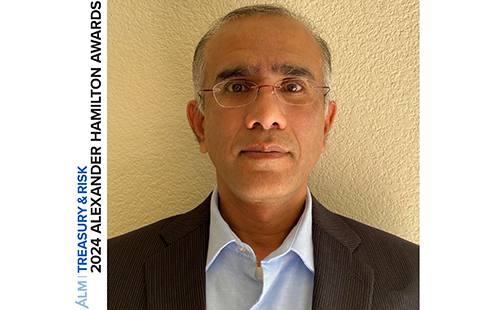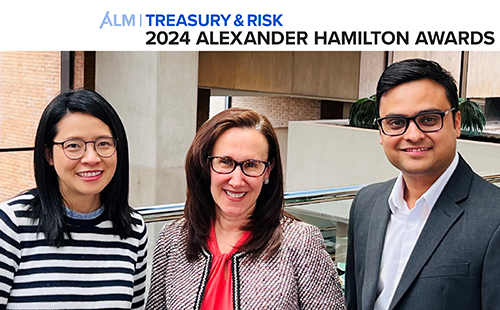
For more than a century, Transamerica has offered financial services solutions with the goal of making financial security more widely available. Today, the company offers life insurance, health insurance, annuities, and retirement savings vehicles.
Numerous acquisitions through the years led to a situation in which Transamerica's liquidity management function was decentralized. The firm had five different workstreams producing operations-related cash flows to cover the liquidity needs of its various product lines. The staff of the company's chief investment office performed corporate-level data aggregation and forecasting, but overall they lacked visibility into the forecast-vs.-actuals experience.
Recommended For You
In 2015, the company started to move toward a more centralized organizational structure, consolidating various business and support functions to create a more robust risk management function and enhance operational efficiency. As part of this initiative, executives formed the Enterprise Cash and Liquidity Management (ECLM) team to improve management of that core treasury function. The team consists of individuals from the chief investment office, the derivatives and collateral operations team, and the asset liability management and hedging department, as well as other senior-level staff who have diverse backgrounds in strategy, technology, and analytical reporting.
The ECLM team initiated an analysis of the liquidity-related activities of different groups across Transamerica. The team engaged KPMG in a three-month benchmarking project that evaluated Transamerica's cash management processes, forecasting methodology, and governance. The result was a slate of risk scores for those processes and a list of suggested improvements. Next, the ECLM team worked with BlackRock's analytics group to build an industry benchmark for cash and short-term investments.
Ultimately, these analyses revealed that Transamerica's historical approach to cash management resulted in an overly conservative liquidity buffer—its allocation of cash and highly liquid assets (mainly U.S. Treasuries) was materially higher than that of peer organizations. Moreover, the analyses found that decentralization limited Transamerica's ability to improve investment returns by purchasing higher-yielding assets and strategic investments, which lowered the company's overall return on equity, created competitive disadvantages, and limited potential organic business growth.
Transamerica moved aggressively to upgrade and enhance its liquidity management model. The goals of the initiative were to optimize liquidity, cash and yield management, and collateral, while providing robust risk management across the liquidity distribution. In other words, the company needed to operate more efficiently in what it deemed a "normal" environment, but also to make diversified sources of funding available so that it would be better prepared for potential liquidity-risk events of the future.
"Liquidity is one of the major reasons for an insurance company to change their asset holdings," says Olivia Qu, senior director of enterprise risk management with Transamerica. "Selling assets or borrowing externally has both pros and cons. It will depend on the company's financial condition and the external market. Any decision to sell assets can directly impact earnings and/or our capital position."
To address liquidity risk, the company established an inventory of diversified internal and external funding sources. Transamerica opened new contingent rate-linked facilities (CRLFs), spread across different banks and over an extended time horizon. The facilities give Transamerica the option to enter a repurchase agreement (repo) when the market rate is the same as the reference rate. "We ran a careful selection process among our relationship banks and developed a diversified portfolio of various international facility providers, all with good ratings and in excellent standing," says Qu. Access to CRLF borrowing enables Transamerica to prepare for future market movements and to reduce its liquidity-risk exposure.
Transamerica simultaneously developed a new framework for responding to impending liquidity challenges. The ECLM team created a series of early warning indicators and key risk indicators of conditions and events that demand management attention. Then they built a flexible playbook for how management should respond to different types of liquidity stress without holding unnecessarily large levels of cash and highly liquid assets day-to-day.
Cash management at Transamerica now focuses primarily on the normal part of the liquidity distribution, in alignment with the company's growth priorities. "We have broken liquidity down to different drivers," explains Qu. "We use historical data to understand cash flow patterns, to understand the range of moves under different market circumstances. We have created a buffer to cover the risk, up to the level we are comfortable taking. And we have combined different risk types to ensure we have ample diversification."
At the same time, Transamerica's new liquidity playbook includes layered step-by-step action plans in the event that early warning or key risk indicators show cause for concern around a particular risk. The playbook suggests the company's base case of a normal operating environment should be manageable with an action plan that uses only "Type A" assets—i.e., cash and highly liquid assets. A mild stress event (value at risk—VaR—of 70 or higher) can be managed with both Type A and "Type B" assets, which are the CRLFs and repo funds. A moderate stress event (VaR of 90+) should be managed utilizing all these asset classes, plus a reduction in dividends and/or expenses companywide. And a severe stress event (VaR of 96+) requires all these approaches, as well as the sale of investment assets.
The liquidity framework assigns detailed roles and responsibilities to each action plan, and incorporates governance and control considerations. It also dramatically increases the frequency of distribution of cash management information, from formal quarterly reporting to daily reports that are shared throughout the risk, financial reporting, and investment groups. The ECLM team continues to schedule regular meetings to touch base and make sure all stakeholders understand the results of the daily reports.
In addition to mitigating financial risks, the new cash management process has significantly improved liquidity visibility companywide. Although Transamerica's cash does not reside in a single cash pool, "with our enhanced tracking tools, we are able to understand all cash movements between entities," says Qu. "As a result, the liquidity buffer has become a single 'pool' in concept, where we use the consolidated amounts to ensure that our cash buffers companywide can meet the overall demand across the organization. This allows us to move cash quickly between entities, while retaining a significant benefit in diversification."
The tangible result of these changes is a release of excess liquidity for investment into higher-yielding assets. Transamerica estimates that the resulting benefit is an increase in net investment income of multiple millions of dollars per year. Moreover, the firm has improved earnings on disposal of assets by selling them on its own schedule, rather than being forced to sell certain assets in stressed market conditions.
One more aspect of the project was centralization and improvement of collateral management. Increased control over collateral processes created opportunities for enhanced asset allocation. "We improved our collateral management through diversification, ensuring that we had the right collateral in the proper program to maximize returns while managing risk," says Qu.
© Touchpoint Markets, All Rights Reserved. Request academic re-use from www.copyright.com. All other uses, submit a request to [email protected]. For more inforrmation visit Asset & Logo Licensing.



